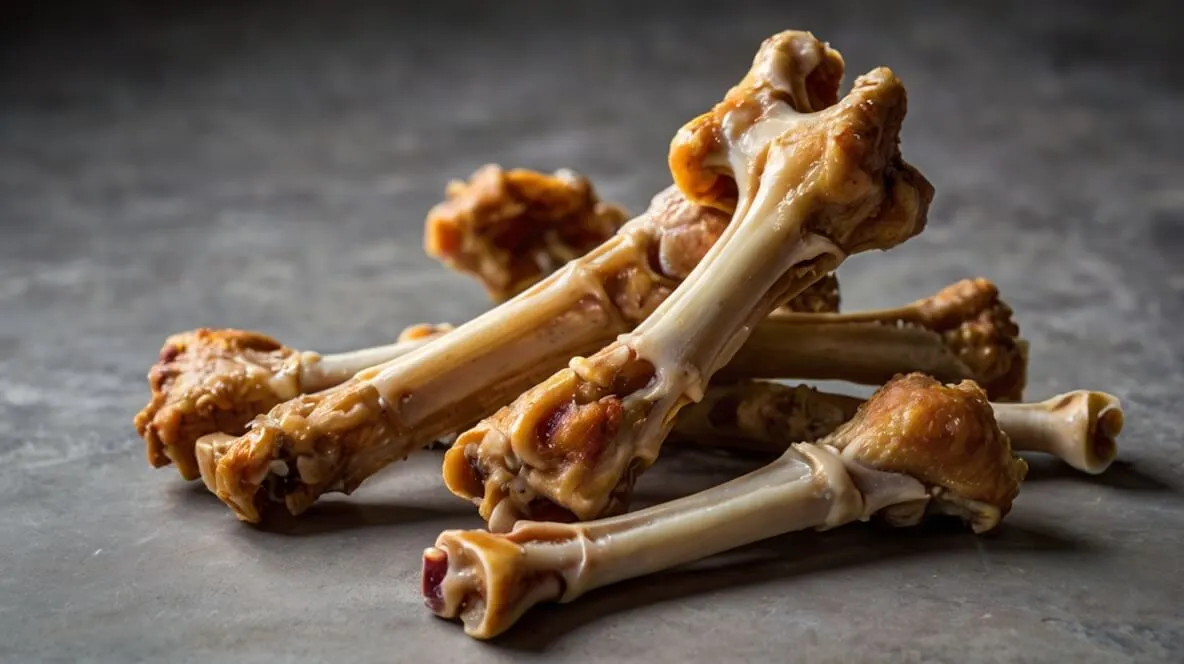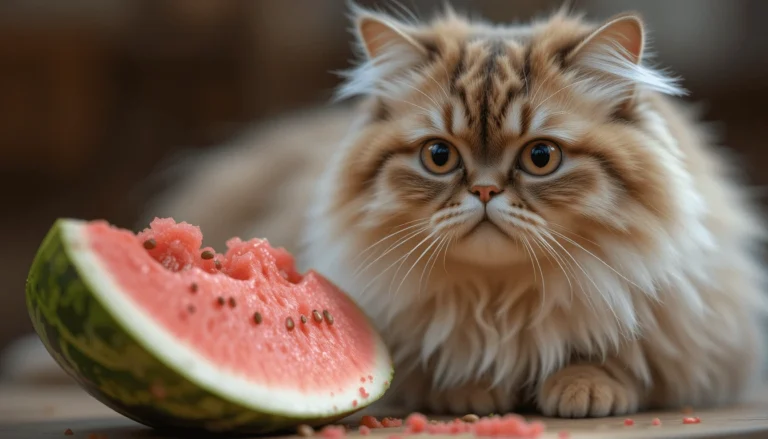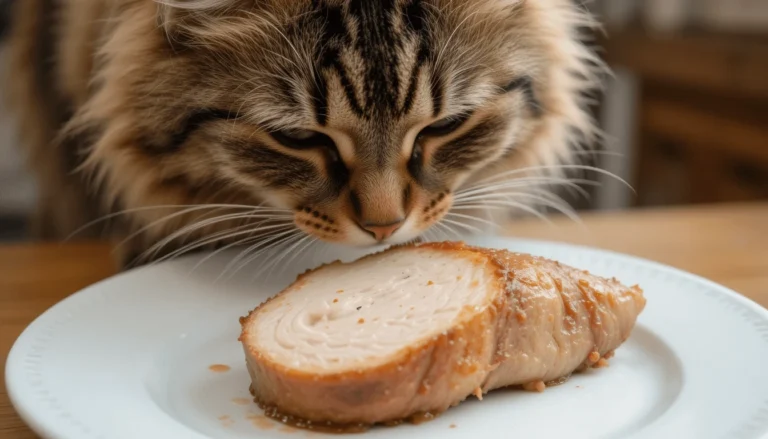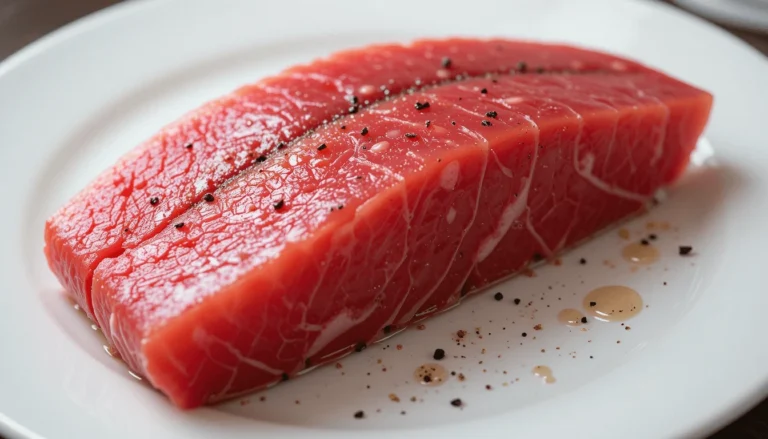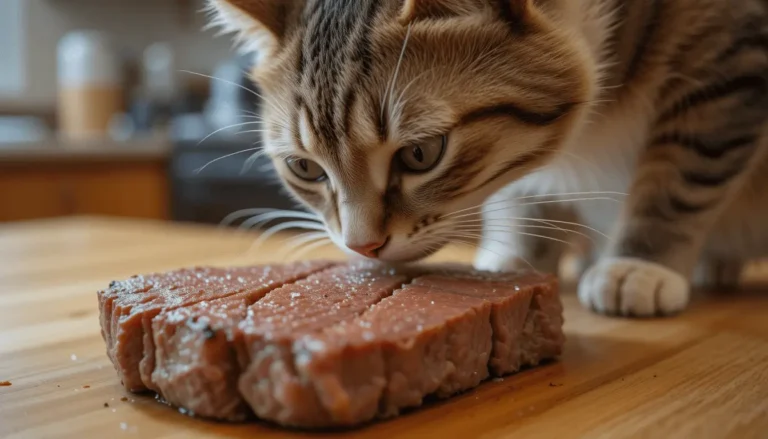Can Cats Have Chicken Bones? The Risks and Safety Tips
Introduction
Wondering if cats can have chicken bones? It might seem like a natural treat, but it’s important to know the dangers. Chicken bones can be harmful to your cat’s health, causing choking or splinter injuries.
Many cat owners think their pets can safely chew on chicken bones. However, these bones can fracture into sharp fragments.
This can lead to mouth or throat cuts, or even serious internal damage. It’s key to watch your cat closely after they eat chicken bones. If you’re worried, always talk to a vet to keep your cat safe.

Key Takeaways
- Understanding the risks of feeding chicken bones to cats is crucial.
- Chicken bones can break apart easily, creating sharp fragments that pose significant health risks.
- Monitoring your cat’s behavior after bone ingestion is essential.
- If your cat consumes chicken bones, it’s important to seek advice from a veterinarian.
- Recognizing the dangers can help ensure your cat’s health and safety.
Introduction to Feeding Cats Chicken Bones
Feeding cats chicken bones might seem like a good idea, especially since they are meat-eaters. Many pet owners think bones are a healthy treat for their cats. They think this is safe because wild cats consume their prey, including bones.
But, it’s important to know that what cats eat in the wild is different from what they should eat at home. This is because the risks of giving them bones are high.
Understanding cat safety and chicken bones means knowing that not all bones are safe. Cooked chicken bones can splinter and hurt your cat’s insides. So, keeping your cat safe should always come first.
Before giving bones to your cat, you need to know the risks and safe options. This way, you can choose the best food for your cat’s health and safety.

Why Chicken Bones Are Dangerous for Cats
Feeding your cat chicken bones is risky. The risks of chicken bones for cats come from cooked bones. They become brittle and can splinter, leading to choking or esophageal blockage. These sharp pieces can also cause serious internal injuries or blockages in the digestive tract.
When a cat eats these bones, they might feel tired and uncomfortable. Symptoms can get worse fast. It’s important to know about chicken bones safety to protect your cat’s health.
Can Cats Have Chicken Bones? A Closer Look
Thinking about giving your cat chicken bones? It’s key to know the dangers of cooked bones and the safety of raw ones. This knowledge helps you choose the best for your cat’s health.
The Risks of Cooked Chicken Bones
Feeding cooked chicken bones to your cat can be risky. These bones break easily and can cause serious harm inside your cat. They might choke, hurt their mouth, or even puncture their stomach.
It’s important to understand the dangers of cooked bones. Even tiny fragments can pose significant risks to your pet.
The Safer Option: Raw Chicken Bones
Raw chicken bones are a safer choice for your cat. They don’t splinter as much and offer important nutrients like calcium and protein. But, it’s important to get them from a safe source and prepare them right.
There’s a risk of bacteria from bad handling or storage. To keep your cat safe, only give them raw bones in small amounts and watch them closely.
Warning Signs Your Cat May Show After Eating a Chicken Bone
After your cat eats a chicken bone, watch its behavior closely. Knowing the signs of distress can help a lot. Look out for these common symptoms:
Signs of Distress in Your Cat
Watch for these signs that might mean your cat has a problem:
- Vomiting: If your cat vomits a lot, it might mean the bone is irritating it.
- Gagging: Gagging or coughing could mean your cat is trying to get rid of a bone stuck in its throat.
- Loss of Appetite: Not wanting to eat could mean your cat is in pain or uncomfortable.
- Lethargy: If your cat seems really tired, it might not be feeling well.
- Bloody Stool: This could mean the bone is causing damage inside your cat.
When to Seek Veterinary Assistance
Knowing when to call a vet is key. If you notice any of these signs, take action immediately. Call a vet if:
- Your cat has severe vomiting or gagging.
- It doesn’t want to eat for more than a day.
- It’s really tired for more than a day.
- You see blood in its stool.
Getting help quickly is important. It helps your cat feel better and avoid bigger problems.
What Should You Do If Your Cat Eats a Chicken Bone?
If your cat eats a chicken bone, act fast. Watch them closely for signs of trouble. Look for choking, coughing, or too much drooling. Remain calm, as your anxiety may stress your pet further.
Don’t try to make your cat vomit. This can make things worse. Just watch how they act for a few hours. Notice if they eat less or have weird poop. If they seem off, call your vet for help.
If it’s an emergency, know what to do. Your vet will want to know about your cat’s size and the bone’s size. Also, tell them about any symptoms. Keep a list of emergency vet numbers handy, just in case.
Best Practices for Cats and Chicken Bones
Keeping your cat safe means taking steps to avoid accidents with chicken bones. By using the right strategies, you can lower risks and make your pet happier. Create a safe space for your cat by preventing them from eating bones.
Preventing Access to Bones
Setting clear rules in your home is a good way to stop cats from eating bones. Tips to Help Protect Your Cat from Dangerous Foods:
- Dispose of leftover chicken bones immediately after meals.
- Store foods securely in cabinets or high shelves.
- Install pet-proof trash cans to prevent scavenging.
- Supervise mealtime to ensure that your cat does not have access to bones.
Educating Your Household
Teaching your family about cat safety is key to protecting your pet. Talk to everyone about the dangers of chicken bones. Make sure they know:
- Never feed cats bones or leftover meats.
- Educate children and visitors about safe cat handling.
- Provide alternative treats that are safe and nutritious for cats.
By spreading the word, you can make your home a safe place for your cat. This way, you can avoid accidents with chicken bones.
Conclusion
Feeding your cat chicken bones can be risky. It’s important to know that while cats might like chicken, the bone type matters a lot. Cooked bones can splinter and hurt your cat inside.
Raw bones might seem safer, but they also have risks. It’s key to understand these dangers to keep your cat safe.
Keeping your cat safe is a big responsibility. You should always be careful about giving them bones. Knowing the risks helps you make better choices for your pet.
By being informed, you help your cat stay happy and healthy. This is a big step in being a good cat owner.
As a cat owner, being aware of bone risks is crucial. Always choose caution and seek vet advice when unsure. This protects your pet from harm.
FAQ
Can cats eat chicken bones?
Cats might want to eat bones, but chicken bones are very dangerous. Cooked bones can break into sharp pieces. This can cause serious health problems.
What are the risks of feeding cooked chicken bones to cats?
Cooked chicken bones can break into sharp pieces. This can cause choking, blockages in the intestines, and even life-threatening injuries inside the body.
Are raw chicken bones safer for cats?
Raw chicken bones are less likely to break than cooked ones. They also have important nutrients. But, they can still have bacteria, so watch your cat closely.
What symptoms should I look for if my cat eats a chicken bone?
Look for vomiting, gagging, loss of appetite, tiredness, or signs of pain. Watching your cat closely is key to spotting any problems early.
When should I seek veterinary assistance for my cat?
If your cat shows signs of pain or discomfort after eating a bone, call your vet right away. They can help prevent serious health issues.
What steps should I take if my cat eats a chicken bone?
Watch your cat closely for any signs of pain. Don’t make them vomit unless your vet says it’s okay. Stay calm and talk to your vet about what to do.
How can I prevent my cat from accessing chicken bones?
Keep chicken bones away from your cat. Make sure food is not within reach. Teach everyone in your home about the dangers of giving bones to cats.
What are some best practices for feeding cats safely?
Always check with your vet before trying new foods. Make sure your home is safe for your cat. Give them balanced meals to meet their nutritional needs.

